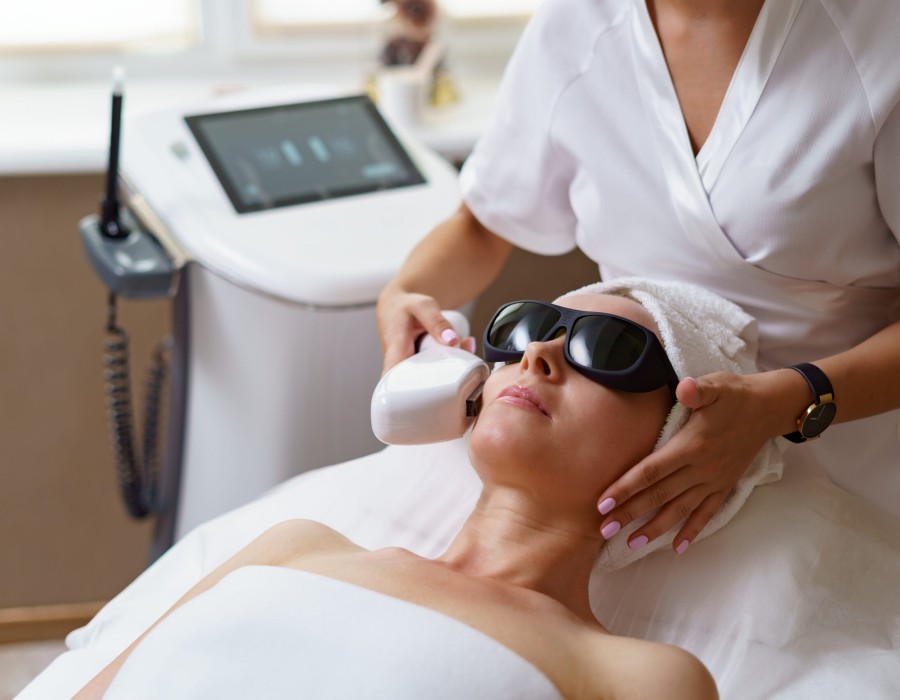In the quest for flawless skin, many individuals are turning to all treatments Laser Skincare Treatment in Dubai as an effective solution. Laser technology has revolutionized the field of dermatology, offering various procedures tailored to address a wide range of skin concerns. This article delves into how laser treatments work, the different types available, their benefits, and what to expect during and after the procedure.
Understanding Laser Treatments:
Laser treatments utilize focused light beams to target specific skin issues. The term "laser" stands for Light Amplification by Stimulated Emission of Radiation. The technology works by emitting concentrated light energy, which is absorbed by the skin's pigments, water, or hemoglobin, depending on the condition being treated.
When the laser light interacts with the skin, it produces controlled thermal damage, which stimulates the body’s natural healing process. This leads to the production of new collagen and elastin, essential proteins that contribute to the skin's structure and elasticity. The result is smoother, firmer, and more radiant skin.
Types of Laser Treatments:
There are several types of laser treatments, each designed for specific skin concerns. Here are some of the most common ones:
Ablative Lasers:
Ablative lasers remove the outer layer of the skin (epidermis) and heat the underlying skin (dermis). This process is effective for:
- Wrinkles and Fine Lines: Reducing the appearance of aging skin.
- Scars: Minimizing the visibility of acne scars and surgical scars.
- Sun Damage: Treating hyperpigmentation and discoloration.
Common ablative lasers include CO2 lasers and Erbium lasers. These treatments often require downtime for recovery, as they cause more significant surface damage.
Non-Ablative Lasers:
Non-ablative lasers work by heating the underlying skin without damaging the surface layer. They are ideal for:
- Skin Tightening: Improving skin laxity.
- Pigmentation: Addressing age spots and sun damage.
- Vascular Issues: Treating rosacea and spider veins.
Examples include Nd lasers and Pulsed Dye lasers. These treatments typically involve little to no downtime and are often repeated over several sessions for optimal results.
Fractional Lasers:
Fractional lasers can be either ablative or non-ablative. They deliver laser energy in a fractional pattern, targeting only a fraction of the skin at a time. This method promotes faster healing and less downtime. Fractional lasers are effective for:
- Textural Issues: Smoothing rough skin.
- Scarring: Improving the appearance of scars.
- Pigmentation: Evening out skin tone.
Laser Hair Removal:
While not specifically a skin treatment, laser hair removal uses concentrated light to target hair follicles, leading to permanent hair reduction. This procedure is suitable for various skin types and can be performed on most body areas.
Benefits of Laser Treatments:
Laser treatments offer numerous benefits for individuals seeking to enhance their skin's appearance. Some of the most notable advantages include:
Precision:
Lasers target specific areas without affecting the surrounding tissue, minimizing damage and promoting quicker recovery.
Customization:
Dermatologists can tailor laser treatments to meet individual skin types and concerns, ensuring optimal results.
Minimal Downtime:
Many non-ablative and fractional laser procedures require little to no downtime, allowing patients to return to their regular activities almost immediately.
Long-lasting Results:
With proper skincare maintenance, the results from laser treatments can be long-lasting, making them a worthwhile investment in skin health.
Safety:
When performed by qualified professionals, laser treatments are considered safe with a low risk of complications.
What to Expect During the Procedure:
Before undergoing a laser treatment, patients typically have a consultation with a dermatologist or licensed practitioner. This session may include:
- Skin Assessment: Evaluating skin type and concerns.
- Discussion of Goals: Understanding patient expectations.
- Treatment Plan: Outline the number of sessions needed and expected outcomes.
During the Treatment:
On the day of the procedure:
- Preparation: The area to be treated will be cleansed, and protective eyewear will be provided.
- Numbing Cream: For comfort, a topical anesthetic may be applied.
- Laser Application: The practitioner will use the laser device, which may produce a snapping sensation. The duration varies based on the treatment area and type.
Post-Treatment Care:
After the laser procedure, it's essential to follow post-care instructions to ensure proper healing and maximize results:
Avoid Sun Exposure:
Protecting the treated area from sun exposure is crucial. Sunscreen should be applied regularly to prevent pigmentation issues.
Moisturize:
Keeping the skin hydrated aids in the healing process. Use a gentle moisturizer as recommended by your practitioner.
Follow-up Appointments:
Regular follow-up visits may be necessary to monitor progress and determine if additional treatments are needed.
Be Patient:
Results from laser treatments may not be immediately visible. It often takes several weeks for the skin to fully heal and for the final results to appear as new collagen forms.
Conclusion:
Achieving skin perfection is a journey, and laser treatments can be a powerful ally in this endeavor. With their ability to address a myriad of skin concerns, from fine lines and wrinkles to scars and pigmentation issues, these advanced procedures offer effective and lasting results. By understanding how laser treatments work and what to expect, individuals can make informed decisions and embark on the path to radiant, youthful skin. Whether you are looking for a subtle enhancement or a significant transformation, consulting with a qualified dermatologist can help you find the right laser treatment tailored to your unique skin needs.





Comments